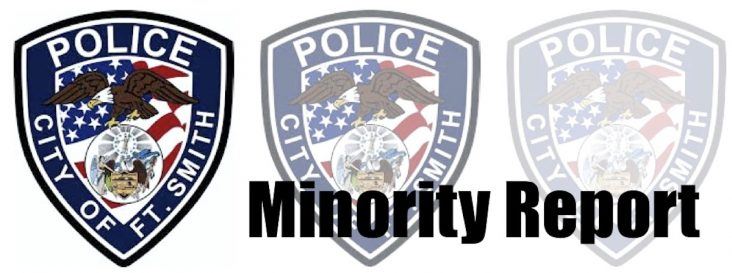Fort Smith police chief admits that department has too few minorities, says problem is a national issue
by December 1, 2015 9:37 pm 608 views

Fort Smith Police Chief Kevin Lindsey readily admits that the city’s police force does not have enough minorities, especially African American officers. He says the department actively works to diversify the force, and that outside factors limit the number of qualified applicants.
Lindsey’s comments Tuesday (Dec. 1) to Talk Business & Politics followed a discrimination/retaliation lawsuit filed Monday against the Fort Smith Police Department (FSPD) and that noted the department has not promoted a black officer since 1988 and has not hired a black officer since 1995.
The lawsuit was filed by Little Rock attorney Matthew Campbell on behalf of his client, Wendall Sampson Jr., in the U.S. District Court of Western Arkansas. Sampson is African American, and the lawsuit alleges discrimination in employment and promotion. According to the complaint, Sampson was hired by the department on Sept. 25, 1995, and is only the 10th black officer hired by the department in its history.
‘FALLING FAR SHORT’
Lindsey said the department has 164 sworn officers, with only one being African American – and that is Sampson. The percentage is 0.6%, which is far below the city’s 9% black population according to the U.S. Census. Lindsey said the department should have a percentage much closer to the 9%.
“They teach you in chief 101 class that (your department) should reflect the makeup of your community,” said Lindsey, who was hired as police chief in January 2007. “There is no doubt that we are way under that, but it’s not because we haven’t been trying. … I think we are doing a good job in the Asian and Latino population, … but falling far short on the African American side.”
He said the department has and continues to “look for other strategies” to recruit more African American applicants. He said strategies include working with the University of Arkansas at Fort Smith and other universities, connecting with colleges, churches and institutions that “cater to African American populations,” and attending recruitment events out of the area. Lindsey said he also has joined the National Association for the Advancement of Colored People to “bridge the communication gap” between minorities and the department.
When asked if the large percentage of white officers on the force might discourage minority applicants, Lindsey said that is a possibility.
“I think that might be a part of it. I haven’t had the opportunity to talk to African American candidates who were in that position, … but I would not be surprised if that were the case,” Lindsey said.
NATIONWIDE PROBLEM
He also said African American candidates with the skills needed by the department are often able to land higher-paying jobs elsewhere. He also said the department’s primary recruitment area around Sebastian County limits the pool of qualified minority applicants. But he also stressed that Fort Smith’s problem is a part of a bigger issue.
“Fort Smith is not unique in seeking out African American officers. There are departments all over the United States that are having the same problem,” Lindsey said.
Most research confirms that assertion.
“Despite efforts to increase diversity, racial/ethnic minority and female representation in many law enforcement agencies still falls short of labor population benchmarks, resulting in agencies that do not reflect the demographics of their communities,” noted a 2012 study by the Rand Center on Quality Policing.
The report said a lack of minorities is usually the result of the “target population” being “disproportionately unaware, unqualified, or uninterested.”
“Lack of awareness suggests a deficiency in outreach actions and events; that is, there is not enough recruitment in areas where demographics suggest that qualified female and racial/ethnic minority candidates could be found. Lack of interest and failure to qualify are more complicated issues, but both imply a qualitative outreach deficiency rather than a lack of recruitment effort,” according to the Rand report.
A September 2015 report by Governing suggests that efforts to diversify police departments have not kept pace with the country’s changing demographic. The report said total minority numbers on police forces are now fewer than two decades ago.
“In 35 of the 85 jurisdictions where either blacks, Asians or Hispanics make up the single largest racial or ethnic group, their individual presence in police departments was less than half their share of the population. Asians were most underrepresented, averaging 33 percentage points below Census population estimates in the seven jurisdictions where they accounted for the single largest demographic,” the report found.
MISSED OPPORTUNITIES?
However, Campbell asserted in the lawsuit that the FSPD has not hired African American candidates who were qualified.
“In over twenty years since Plaintiff was hired, the FSPD has not hired another African-American officer, despite multiple African-American candidates’ applying and meeting the necessary qualifications for being hired,” Campbell noted in the suit.
In a follow up interview, Campbell said he knows of “at least two recent applicants who passed the objective portions of the application process, but somehow failed other, subjective portions.”
Lindsey declined to comment on any language in the lawsuit or comments from Campbell.
“I have no response regarding any of the litigation,” Lindsey said.
